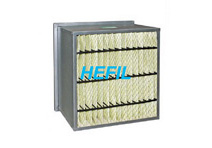How to clean absolute filters is closely linked with the physical properties of materials. This is largely because the design of Absolute Filters is dictated by the hierarchical arrangements across different length scales. The construction and engineering of Absolute Filters structures at each length scale are critically important in achieving desired filtering properties. However, it has to be pointed out that the traditional top–down lithography techniques face serious challenges in fabricating Absolute Filters. Therefore, how to clean absolute filters might involve the application of the bottom–up approach based on self-organization. In other words, Absolute Filters can be directed under the assembly of functional molecules so as to provide a promising alternative. The past decades have witnessed the development of diverse Absolute Filters.
Notably, these motifs have enabled the programmed self-assembly of highly efficient filtering materials and studies about how to clean absolute filters have greatly improved our understanding of the thermodynamics and kinetics of filtering processes. Due to this reason, the studies have opened enormous possibilities in modern filtering technology. At the same time, interactions of Absolute Filters such as hydrogen bonding and metal coordination bonding are related to electrostatic forces. They are known to be the fundamentals to precise self-assembly of Absolute Filters. Specific recognition and binding events are based on collective and cooperative multiple interactions when it comes to how to clean absolute filters. More recently, anisotropy in shape has also been recognized as a critical factor in the filtering process due to packing constraints.
The goal is to find a low-polluting solution with the help of Absolute Filters from commercially available products after we have learned how to clean absolute filters. The results indicate that the use of activated carbon filters can be rather helpful in the downstream filters. And detailed instruction in the field can reduce the degradation of air quality that occurs with increasing particle loading in spite of the presence of Absolute Filters. A more practical solution is a stand-alone particle filter that incorporates activated carbon. In either case, further testing is needed about the functions of Absolute Filters under a variety of conditions. Thus, specific types of the cutting edge filters can be recommended before we are making design decisions. What is more, if we intend to capture the structural features of Absolute Filters surfactants, giant surfactants can bridge the gap and demonstrate a duality of both materials in terms of the self-assembly behaviors.
In stark contrast to this bias, many particle processes can be controlled in the computational fluid dynamic model to examine the functions of Absolute Filters.
Related Products You May Interested: Pre Filters | panel filters





